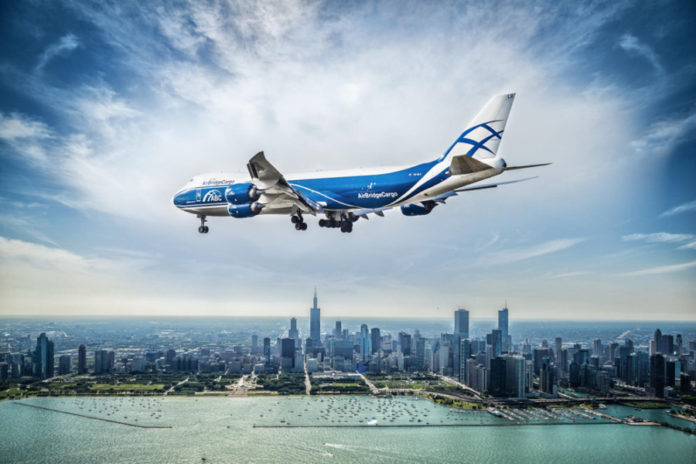

AirBridgeCargo Airlines (ABC) is one of the few carriers in the world to carry all nine classes of DG (including CAO cases) and is an acknowledged reliable expert when it comes to transportation of DG.
This covers from simple consumer goods, such as aerosols, paints and perfumery products, up to highly radioactive materials used in manufacturing and medicine. It also covers acceptance of all types of lithium metal and lithium-ion batteries, both single and in/with equipment, including cases under special provisions A88 and A99, as well as the transportation of electric-powered vehicles (BEV, HEV and EV).
According to AirBridgeCargo Airlines director general Sergey Lazarev in 2017 the carrier transported over 11,000 tonnes of dangerous goods, and a further 7,000 tonnes during the first six months of 2018, which is almost 50 per cent up compared to the same period of 2017. The upsurge is attributed to emerging volumes of DG cargoes, as well as the strengthening of ABC’s dedicated services – abcDG.
He says: “On a monthly basis, we transport around 1,500 tonnes of DG cargo onboard our freighter services, with the main trade lane being that of Asia-Europe and the most common DG cargoes being high-tech products containing lithium batteries. We have also seen a strong increase in demand for automotive and aviation spare parts from Europe to Asia and from America to Europe, which we attribute to growing customer awareness of our dedicated abc DG and and DG/Li products as well as the realignment of internal procedures, reinforcement of the abc DG team, and introduction of the latest IT technologies.”
ABC operates in full compliance with IATA Dangerous Goods Regulations and ICAO Technical Instructions for the Safe Transport of Dangerous Goods by Air, Doc 9284 AN/905. Apart from that, additionally, it follows its own internal safety procedures, which were developed to control and diminish the risks during DG transportation. This is mostly applicable to delivery of lithium batteries, as well as other classes of DG, falling within the CAO (cargo aircraft only) category.
All ABC specialists dealing with DG transportation are regularly trained for IATA DGR compliance, either at special training centres or in-house with ABC IATA DG trainers who organise trainings for ABC personnel. Apart from DG trainings, required by state regulators, ABC specialists also complete a separate course for lithium batteries transportation.
Transportation of dangerous goods is strictly regulated by IATA Dangerous Goods Regulations and ICAO Technical Instructions for the Safe Transport of Dangerous Goods by Air, Doc 9284 AN/905, which are subject to compliance by all the supply chain stakeholders.
Lazarev says: “Nowadays, the most problematic issue with DG is the transportation of lithium batteries, both separate and in equipment. The volumes are increasing every year, coupled with problems arising during the course of their transportation. To successfully transport lithium batteries is a multi-tiered process which requires precise and accurate actions and strict compliance with all industry-related regulations.
“All the stakeholders should audit each step of the transportation in order to identify critical points and develop an action plan for further improvement and refinement.”
AirBridgeCargo has been developing new solutions and adapting latest technologies to maintain safety and security for DG transportation. One suggestion was related to a safe and reliable ULD. That said, a prototype of a unique container for LB transportation, manufactured jointly by AirBridgeCargo and German company Gelkoh, has been designed to give ABC customers extra confidence in safety during transportation.
Lazarev says: “It features modified walls with a fireproof material to withstand fire of lithium batteries; decompression windows to let the smoke pass outside in case of fire to prevent bursting; and special protection on the floor, to prevent damage from pallets.
“Being aware of the risks associated with lithium batteries transportation means reviewing cutting-edge technologies to guarantee safety and security. We have also initiated usage of fire containment covers (FFC) to protect shipments during the whole flight. Apart from minimisation of aviation accident and risk, it is lightweight, easy-to-handle, and durable.”
The biggest problem with e-commerce shipments is that sometimes goods are identified/labelled wrongly as general cargo without specifying a DG class.
With so many goods containing lithium batteries in e-commerce shipments (smart phones, power banks, kids toys, hoverboards, etc) mistakes and non-compliance are frequent cases which leads to emerging volumes of ‘hidden’ DG shipments.
He says: “There have been some situations in the wider air cargo industry where inappropriate DG handling has led to major aviation emergency incidents. That said, in our practice, we take all necessary actions to minimise risks, make assessments and take preventative actions to avoid problematic situations with DG shipments.
“This problem is mostly related to a lack of essential training and knowledge among supply chain stakeholders – something our industry should be addressing, “ says Lazarev.













